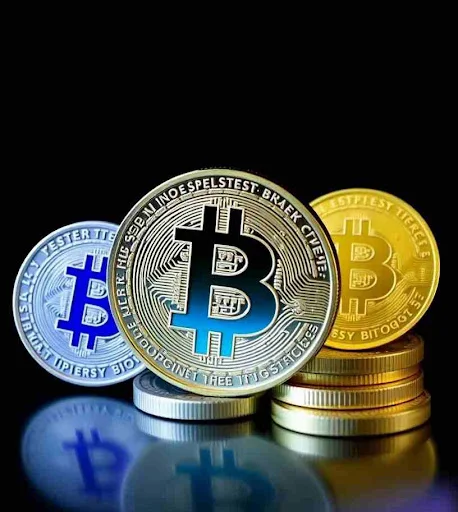RSS3: The Future of Decentralized Social Networks
In the evolving world of blockchain and decentralized technology, RSS3 stands out as an innovative project aimed at redefining the way we interact with social networks and the internet. This next-generation decentralized protocol takes inspiration from the popular RSS (Really Simple Syndication) feeds but elevates the concept to a whole new level with blockchain integration and Web3 principles.
This article explains RSS3, its features, benefits, use cases, and its potential to transform the digital landscape.
What is RSS3?
RSS3 is a decentralized information distribution protocol designed to replace traditional RSS feeds with a blockchain-powered, user-controlled system. Unlike RSS, which aggregates and distributes content in a centralized manner, RSS3 leverages Web3 technologies, ensuring that users retain full control over their data and interactions.
By incorporating decentralized storage, smart contracts, and peer-to-peer networking, RSS3 creates a system where users can own, share, and monetize their digital assets without intermediaries.
How Does RSS3 Work?
RSS3 works as an open protocol where information is stored in decentralized data structures known as "feeds." These feeds are controlled by users or organizations and can be accessed, shared, or updated in real time.
The system integrates blockchain technology and Web3 protocols, enabling users to maintain ownership of their data.
Key Components of RSS3:
1. Feeds: The core of RSS3, where users publish or update their data. Feeds can contain text, multimedia, NFTs, or any digital content.
2. Decentralized Storage: Instead of relying on centralized servers, RSS3 uses decentralized storage solutions like IPFS (InterPlanetary File System) to ensure data security and accessibility.
3. Smart Contracts: These automate processes like content licensing, monetization, or access permissions.
4. Peer-to-Peer Network: RSS3 operates on a peer-to-peer network, ensuring direct interaction between users without intermediaries.
Features of RSS3
1. Decentralization
RSS3 eliminates centralized servers, reducing the risk of data breaches and censorship. Users retain complete control over their information.
2. User Ownership
Unlike traditional social media platforms where companies own user data, RSS3 ensures that individuals maintain ownership of their digital content and identity.
3. Interoperability
RSS3 is compatible with various Web3 tools and platforms, enabling seamless integration with decentralized applications (dApps) and blockchain ecosystems.
4. Monetization Opportunities
Content creators can directly monetize their work without relying on third-party platforms. Smart contracts enable efficient royalty distribution and subscription-based models.
5. Transparency and Trust
All transactions and interactions on RSS3 are recorded on the blockchain, ensuring transparency and building trust among users.
6. Customizable Feeds
Users can curate their feeds, deciding what content to share and with whom. This enhances privacy and personalization.
Benefits of RSS3
1. Enhanced Privacy
Traditional social media platforms often collect and sell user data. RSS3, with its decentralized architecture, ensures that data remains private and under the user’s control.
2. Freedom of Expression
RSS3 minimizes censorship by decentralizing content distribution, providing a platform for free and open communication.
3. Global Accessibility
With its decentralized nature, RSS3 is accessible worldwide, regardless of regional restrictions.
4. Reduced Dependency on Intermediaries
By cutting out intermediaries, RSS3 reduces costs for users and ensures direct interactions.
5. Better Revenue Models for Creators
Creators can earn directly from their audience without paying hefty commissions to centralized platforms.
Use Cases of RSS3
1. Decentralized Social Media
RSS3 can power decentralized social media platforms where users control their content, data, and monetization.
2. Content Aggregation
Similar to traditional RSS feeds, RSS3 can aggregate content from multiple sources but with added features like user ownership and monetization.
3. Digital Identity
Users can create decentralized identities tied to their RSS3 feeds, enabling secure and seamless access to various Web3 applications.
4. NFT Marketplaces
RSS3 can host and distribute NFTs, allowing creators to sell their digital assets directly to buyers.
5. Decentralized Blogging
Bloggers can publish content on RSS3, reaching a global audience without relying on centralized platforms.
6. Education Platforms
RSS3 can support decentralized education platforms, enabling secure sharing of learning materials and lectures.
7. E-Commerce
Online stores can leverage RSS3 to list products, manage inventory, and accept cryptocurrency payments.
The Role of Blockchain in RSS3
Blockchain technology is at the heart of RSS3, ensuring that:
• Data remains immutable and secure.
• Users can verify content authenticity.
• Transactions are transparent and efficient.
How to Use RSS3?
1. Set Up a Wallet
To interact with RSS3, users need a Web3 wallet compatible with the platform.
2. Create a Feed
Users can create their personalized feed, deciding what content to share and with whom.
3. Interact with dApps
RSS3 enables seamless integration with dApps for various purposes, including content sharing, social networking, and e-commerce.
4. Monetize Content
Creators can monetize their feeds using subscriptions, pay-per-view models, or NFT sales.
Challenges of RSS3
1. Adoption
As a new concept, RSS3 faces challenges in gaining widespread adoption, especially among non-technical users.
2. Regulatory Uncertainty
Decentralized platforms often face regulatory scrutiny, which could impact RSS3’s growth.
3. Scalability
Handling large-scale adoption while maintaining performance is a challenge for decentralized systems.
The Future of RSS3
RSS3 represents the next step in the evolution of digital content distribution. Its emphasis on decentralization, user ownership, and blockchain integration positions it as a powerful tool for the Web3 era.
As the demand for decentralized platforms grows, RSS3 is likely to see increased adoption across industries like social media, e-commerce, and education. Its innovative approach to data ownership and monetization could redefine how we interact with the internet.
Conclusion
RSS3 is a groundbreaking protocol that brings decentralization, transparency, and user ownership to the forefront of digital content distribution. By integrating blockchain technology and Web3 principles, it provides a secure, scalable, and user-friendly alternative to traditional systems.
Whether you're a content creator, a developer, or simply an internet user, RSS3 offers an exciting glimpse into the future of decentralized social networks and digital interactions. With its innovative features and growing ecosystem, RSS3 is poised to play a significant role in the Web3 revolution.





Comments
Post a Comment